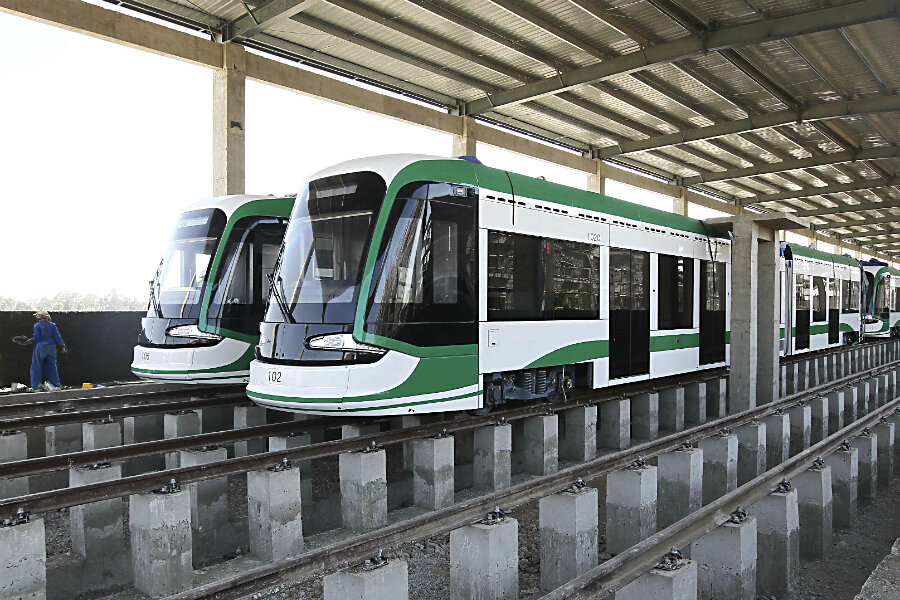Sub-Saharan Africa gets its first metro system
Commuting in large African cities is notoriously hectic. It generally involves waiting in long lines before being crammed onto buses and minivans and braving endless traffic jams.
But the scenario has changed in Addis Ababa, Ethiopia’s capital.
The Ethiopian government recently opened a light rail metro system, intended to transform the lives of the more than 4 million people in the capital. The system is the first of its kind not only in the city but in the whole sub-Sahara African region.
The track, which includes elevated sections and tunnels, "runs from Addis Ababa’s main industrial area on its southern fringe, through the trading district of Merkato, to the historic center of Piazza. An east-west line skirts the African Union’s headquarters, soars past the main government district and out to modern housing developments," Bloomberg reports.
The $475 million system was constructed over three years by the China Railway Group Limited after the Ethiopian government secured 85 percent of the required funding from the Export-Import Bank of China.
China was also responsible for training drivers and maintenance staff.
Ticket prices are relatively low. They cost up to 6 Ethiopian birr, around $0.27. It’s estimated the line will cost about 1.5 billion birr ($72 million) a year to maintain. "The government is subsidizing this transportation system," explained Workneh Gebeyu, the transportation minister, to Bloomberg. "This is not for commercial purpose, it’s for the public."
The metro system is powered by big dams located all over the country, reports CNN. "We do not share the power from the city of Addis, and also we will not have continuous interruptions or power shortage problems," said Behailu Sintayehu, manager of the light rail project.
The only other light railways in Africa are in the north, in Morocco, Algeria, and Tunisia. Lagos, Africa’s largest city, has had plans for a light rail system for several years now, but the Nigerian government has reported construction delays.
Ethiopia's new hydro-powered light rail puts the nation on track to achieving its mission of a low-carbon future. Ethiopia's greenhouse gas emission reduction strategy, dubbed Climate-Resilient Green Economy, aims to make the country a carbon-neutral, green economy by 2025.
Ethiopia, the second most populated country in Africa, has one of the fastest-growing economies in the world. The International Monetary Fund predicts a growth rate for the country of 8 percent or more in the coming year.





